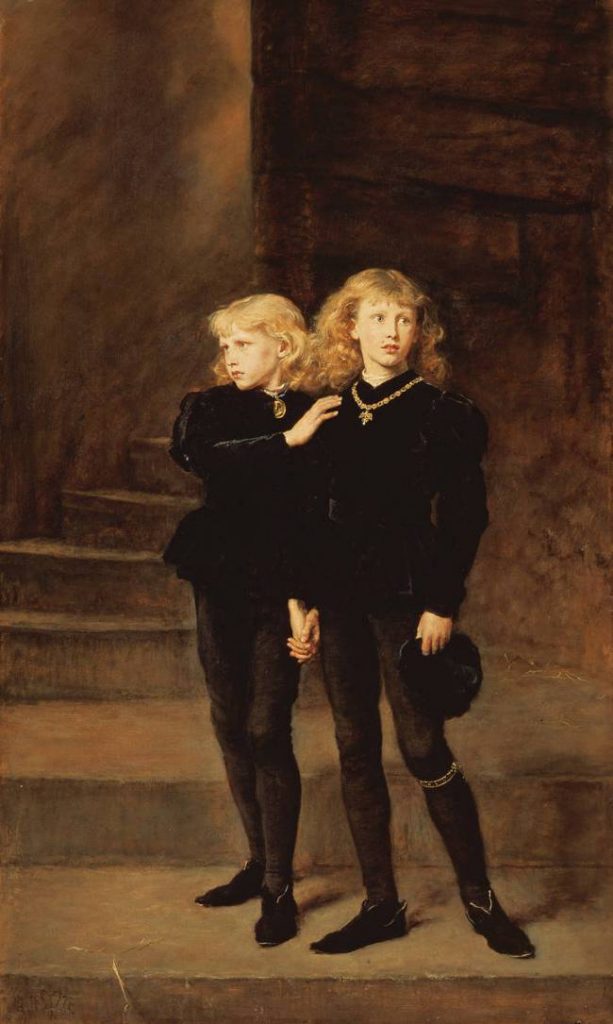The Two Princes Edward and Richard in the Tower
Apart from one pen portrait of Edward V with his father (which does not represent a likeness), no contemporary portraits of either of Edward IV’s sons exist. It is hardly surprising then that this romantic portrait, painted 400 years after the boys’ death, has become so popular, and is used by so many when discussing the tragic siblings. It is the portrait that I remember from my childhood thanks to its use in my beloved history book.
John Everett Millais was a highly talented and regarded artist, the youngest student of the Royal Academy school and a founding member of the Pre-Raphaelite Brotherhood. By the 1870s he had adapted his style and had become interested in historic subjects. For some his change of style indicated that he had ‘sold out’, but his work was commercially successful and made him a wealthy man.
The Two Princes Richard and Edward in the Tower, was painted in 1878 using locations found in Perthshire. His son recalled:
‘Not being quite satisfied that the background was sufficiently like the spot in “The Bloody Tower,” where the boys are supposed to have been murdered, he sent me on three successive days to make pencil sketches of the interior; and finding from them that he had got the steps too small, and the staircase going the wrong way, he went and made drawings himself. Then, throwing aside the work he had already done, he started the picture again on a new and larger canvas, showing the exact surroundings of the place where the bodies of the murdered princes were found.’
There is also the shadow of a third figure on the stairs, probably depicting their approaching killer. The painting not only represents a historical interpretation of the events of 1483, but is also a commentary on the dangers children still faced at the time it was painted.
The angelic and fragile depiction of the two boys was highly popular with their Victorian audiences.
